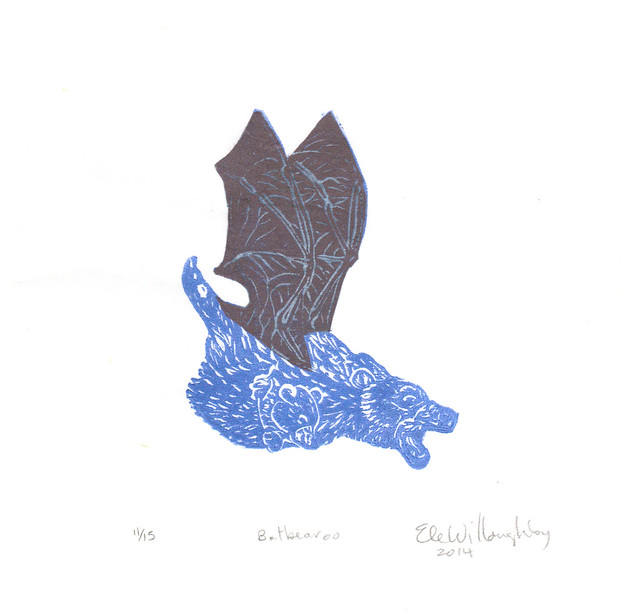
Batbearoo (Dasychiroptera ursus)
The Batbearoo shares a common ancestor with the marsupial quoll family of Australia, and diverged from the quoll line in the mid-Miocene. While glider possoms are well-known, until the discovery of the rare Batbearoo in the wild and the fossil record, bats were believed to be the only true flying mammals. Unlike the glider possoms, but like the bats, the Batbearoo forelimbs form webbed wings and it does indeed fly, rather than simply glide, by flapping the outspread digits of its forelimbs - or, essentially, wing. This is an instance of convergent evolution; the Batbearoo fills a similar niche to the bats and hence their ressemblance, despite the lack of any close relation to placental mammals.
Batbearoos can grow to 25 cm (10 inches) in length and weigh up to 1 kg (2.2 pounds) and are usually mistaken for various members of the bat family.
Like all marsupials, the Batbearoo carries its young in a pouch, like this female. The young are born quite immature and spend up to 24 months being carried in their mother's pouch. When sufficiently grown to fly on their own, the mother batbearoo tightens her abdominal muscles and dives from a great height, causing the young to slip out of the pouch and instinctively spread its wings. It can safely glide for great distances before venturing to flap its wings and truly fly. The Batbearoo parents can be seen spiralling around, roaring and perstering their young to encourage them to flap their wings.
The Batbearoo is most active in the evening. Like their cousins the quolls they are carnivorous, preying on small mammals and insects. Their variable blue colouring makes them virtually invisible against the sky and rarely spotted in the shadows of the evening forest.









No comments:
Post a Comment